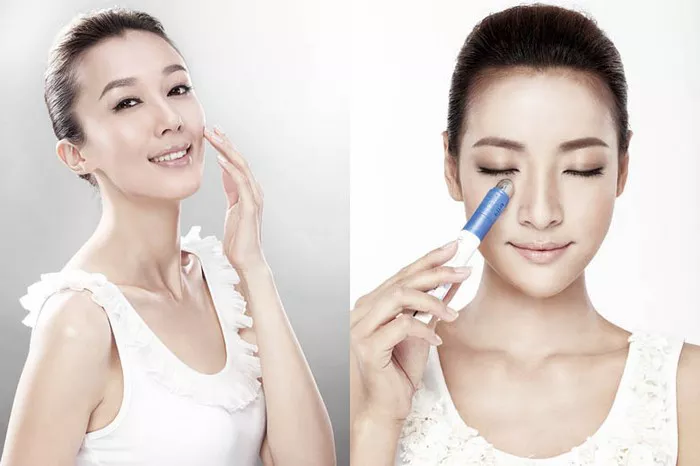Taking care of your skin is an important part of maintaining a healthy and glowing complexion. However, with so many products and techniques available, it can be difficult to know where to start. In this article, we will provide you with a step-by-step guide to skin care, outlining the essential steps you need to take to achieve healthy, radiant skin.
Step 1: Cleanse
The first step in any skin care routine is to cleanse your skin. Cleansing helps remove dirt, oil, and impurities from your skin, preventing breakouts and promoting a healthy complexion.
To cleanse your skin, start by wetting your face with warm water. Then, apply a gentle cleanser to your skin, using your fingertips to massage it in. Rinse your face with warm water and pat dry with a soft towel.
When choosing a cleanser, look for one that is gentle and appropriate for your skin type. If you have oily or acne-prone skin, look for a cleanser that contains salicylic acid or benzoyl peroxide. If you have dry or sensitive skin, look for a cleanser that is fragrance-free and contains hydrating ingredients like glycerin or hyaluronic acid.
Step 2: Tone
After cleansing, the next step is to tone your skin. Toning helps remove any remaining impurities from your skin and prepares it for the next steps in your skin care routine.
To tone your skin, apply a toner to a cotton pad and swipe it over your face and neck. Focus on areas that are prone to oiliness or breakouts, like your T-zone.
When choosing a toner, look for one that is appropriate for your skin type. If you have oily or acne-prone skin, look for a toner that contains salicylic acid or witch hazel. If you have dry or sensitive skin, look for a toner that is alcohol-free and contains hydrating ingredients like aloe vera or chamomile.
Step 3: Treat
The next step in your skin care routine is to treat any specific skin concerns you may have. This could include acne, fine lines and wrinkles, or dark spots.
To treat your skin, apply a targeted treatment product to the affected areas. For example, if you have acne, apply a spot treatment containing benzoyl peroxide or salicylic acid. If you have fine lines and wrinkles, apply a serum containing retinol or vitamin C. If you have dark spots, apply a serum containing hydroquinone or kojic acid.
When choosing a treatment product, look for one that is appropriate for your skin type and specific concerns. If you are unsure which product to use, consult with a dermatologist or skin care professional.
Step 4: Moisturize
Moisturizing is an essential step in any skin care routine. Moisturizing helps hydrate your skin, preventing dryness and promoting a healthy, glowing complexion.
To moisturize your skin, apply a moisturizer to your face and neck, using gentle upward strokes. Look for a moisturizer that is appropriate for your skin type. If you have oily or acne-prone skin, look for a lightweight, oil-free moisturizer. If you have dry or sensitive skin, look for a moisturizer that is rich and hydrating.
Step 5: Protect
The final step in your skin care routine is to protect your skin from the sun’s harmful rays. Sun damage can cause premature aging, dark spots, and even skin cancer, so it is important to wear sunscreen every day.
To protect your skin, apply a broad-spectrum sunscreen with an SPF of at least 30 to your face and neck. Reapply every two hours if you are outside for an extended period of time.
When choosing a sunscreen, look for one that is appropriate for your skin type and does not cause breakouts or irritation. Look for a sunscreen that is lightweight and non-greasy, so it does not clog your pores.
Additional Tips for Healthy Skin
In addition to following a skin care routine, there are other steps you can take to promote healthy, glowing skin:
Drink plenty of water to keep your skin hydrated.
Eat a healthy, balanced diet rich in fruits, vegetables, and whole grains.
Get enough sleep to promote healthy skin cell turnover.
Avoid smoking and excessive alcohol consumption, as they can damage your skin.
Manage stress through exercise, meditation, or other relaxation techniques.
Conclusion
Taking care of your skin is an essential part of maintaining a healthy and glowing complexion. By following a skin care routine that includes cleansing, toning, treating, moisturizing, and protecting your skin, you can promote healthy, radiant skin. Remember to choose products that are appropriate for your skin type and specific concerns, and to consult with a dermatologist or skin care professional if you have any questions or concerns. By making skin care a priority, you can achieve the healthy, glowing complexion you deserve.
[inline_related_posts title=”You Might Be Interested In” title_align=”left” style=”list” number=”6″ align=”none” ids=”5029,5023,4986″ by=”categories” orderby=”rand” order=”DESC” hide_thumb=”no” thumb_right=”no” views=”no” date=”yes” grid_columns=”2″ post_type=”” tax=””]






























